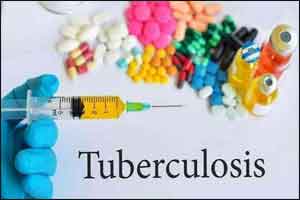- Home
- Editorial
- News
- Practice Guidelines
- Anesthesiology Guidelines
- Cancer Guidelines
- Cardiac Sciences Guidelines
- Critical Care Guidelines
- Dentistry Guidelines
- Dermatology Guidelines
- Diabetes and Endo Guidelines
- Diagnostics Guidelines
- ENT Guidelines
- Featured Practice Guidelines
- Gastroenterology Guidelines
- Geriatrics Guidelines
- Medicine Guidelines
- Nephrology Guidelines
- Neurosciences Guidelines
- Obs and Gynae Guidelines
- Ophthalmology Guidelines
- Orthopaedics Guidelines
- Paediatrics Guidelines
- Psychiatry Guidelines
- Pulmonology Guidelines
- Radiology Guidelines
- Surgery Guidelines
- Urology Guidelines
To prevent Latent tuberculosis, maximize access to testing and treatment : WHO's Updated guidelines

Latent tuberculosis infection (LTBI) is defined as a state of persistent immune response to stimulation by Mycobacterium tuberculosis antigens with no evidence of clinically manifest active TB. There is no gold standard test for LTBI therefore WHO has issued new recommendations calling for maximizng access to testing and treatment for TB prevention.The new WHO guidelines will help to save by ensuring that everyone can obtain the treatment they need, to prevent latent TB developing into active TB.
One of major recommendation of World Health Organization (WHO) is regarding scaling up access to testing and treatment for TB infection, especially among groups who are particularly at risk, such as small children and people living with HIV. The move will expand access to testing and appropriate treatment for people with latent TB infection (LTBI). so that they don't develop into an active TB case in the future.
Highlights
The new WHO Updated and consolidated guidelines for programmatic management of Latent TB infection, recommend action on three fronts:
- Expanding the number of groups being prioritized for latent TB infection testing and treatment. Health practitioners have been prioritizing testing and treatment of people living with HIV and children under the age of 5 who have been in contact with people who have TB. WHO has now identified HIV-negative children aged ≥ 5 years, adolescents and adults who are contacts of TB patients, as well as contacts of patients with multidrug-resistant TB (MDR-TB), as additional high-risk groups.
- Expanding the testing options: WHO recommends scaled-up testing for latent TB infection in both high- and low- TB- burden countries. A tuberculin skin test or interferon-gamma release assay can be used to test for latent TB infection. Active TB disease should always be ruled out before prescribing preventive treatment, as per WHO guidelines.
- Expanding the treatment options: WHO is recommending two new shorter treatment regimens to treat latent TB infection. Rifapentine and isoniazid weekly for 3 months may be offered as an alternative to 6 months of isoniazid monotherapy as preventive treatment for both adults and children. Rifampicin plus isoniazid daily for 3 months should be offered as an alternative to 6 months of isoniazid monotherapy as preventive treatment for children and adolescents aged < 15 years. These shorter regimens will help patients adhere to their treatment and complete it.
WHO is also releasing a mobile application to support programmatic management of latent TB infection. Countries are encouraged to adapt this tool to the country context and ensure systematic monitoring and evaluation.
“The scale-up of TB preventive treatment has been slow. Only twelve of the 30 countries with a high burden of HIV-associated TB reported provision of TB preventive treatment among people living with HIV, and only 13% of the 1.3 million eligible children received preventive treatment in 2016,” said Dr Haileyesus Getahun, Coordinator for TB/HIV and community engagement, WHO Global TB Programme. “We hope the new guidelines will disrupt the status quo in many countries and leapfrog global implementation of TB prevention efforts.”
The consolidated guidelines are expected to guide the development of national guidelines for latent TB management, adapted to the national and local epidemiology of TB, the health infrastructure and other national and local determinants. The guidelines will also contribute to global and national responses in finding and reaching those TB patients not in care, through systematic screening and testing. The guidelines are to be used primarily in national TB and HIV control programmes, or their equivalents in ministries of health, and for other policy-makers working on TB and HIV and infectious diseases. They are also appropriate for officials in other line ministries with work in the areas of health.
“We really look forward to implementing these new guidelines, as they offer a number of opportunities, including simpler, shorter, preventive TB regimens, that will help reinvigorate scale-up of TB prevention for high burden countries like ours”, said Dr Yogan Pillay, the Deputy Director-General for Health in South Africa. “These guidelines clearly aim to be transformative and will go a long way in ensuring that no at-risk person gets left behind.”

Disclaimer: This site is primarily intended for healthcare professionals. Any content/information on this website does not replace the advice of medical and/or health professionals and should not be construed as medical/diagnostic advice/endorsement or prescription. Use of this site is subject to our terms of use, privacy policy, advertisement policy. © 2020 Minerva Medical Treatment Pvt Ltd